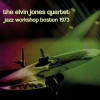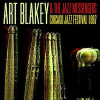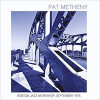Loading cart

Semi-Formal

The Claudia Quintet is proof positive that the pessimists were wrong: jazz is not dead, despite being embalmed by major labels and confined by some musicians to dead ends. In the works of this sensational NY-based, 'jazz and beyond' ensemble, jazz has broken through its rigid shell and been reborn in shimmering and beautifully alluring new form. It lives and breathes in music that melds influences from classical minimalism, new music composition, and progressive and post-rock with an astonishingly fresh jazz sensibility. Whatever one wants to call their music, it has very striking original, unique and attractive qualities. This is a slowly unfolding album; group leader/drummer/composer John Hollenbeck has specifically stated that this album is ...a 'listener's record' - a record that might not make perfect sense when individual tracks are listened to randomly on one's ipod shuffle or on a writer's deadline.... In the end, despite despite cultural pressure to create an instant "hit", I had to listen to my inner voice and go for this - whatever you want to call it - (is it a concept album?)...an album that I hope will cater at the very least to the deep, patient listener." In addition to Hollenbeck, the band has four other superb musicians: Drew Gress (double bass), Matt Moran (vibraphone), Ted Reichman (accordion) and Chris Speed (tenor sax and clarinet). Their previous release, "I, Claudia" was a huge critical and sales success, even reaching the top 15 jazz albums played in the US, according to CMJ, a major industry guide! es success, even reaching the top 15 jazz albums played in the US, according to CMJ, a major industry guide!
The Claudia Quintet creates a fresh, distinctive sound while it obliterates barriers between jazz, classical and progressive rock.-DownBeat.?




















